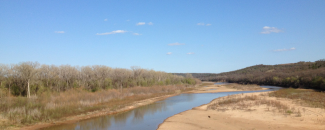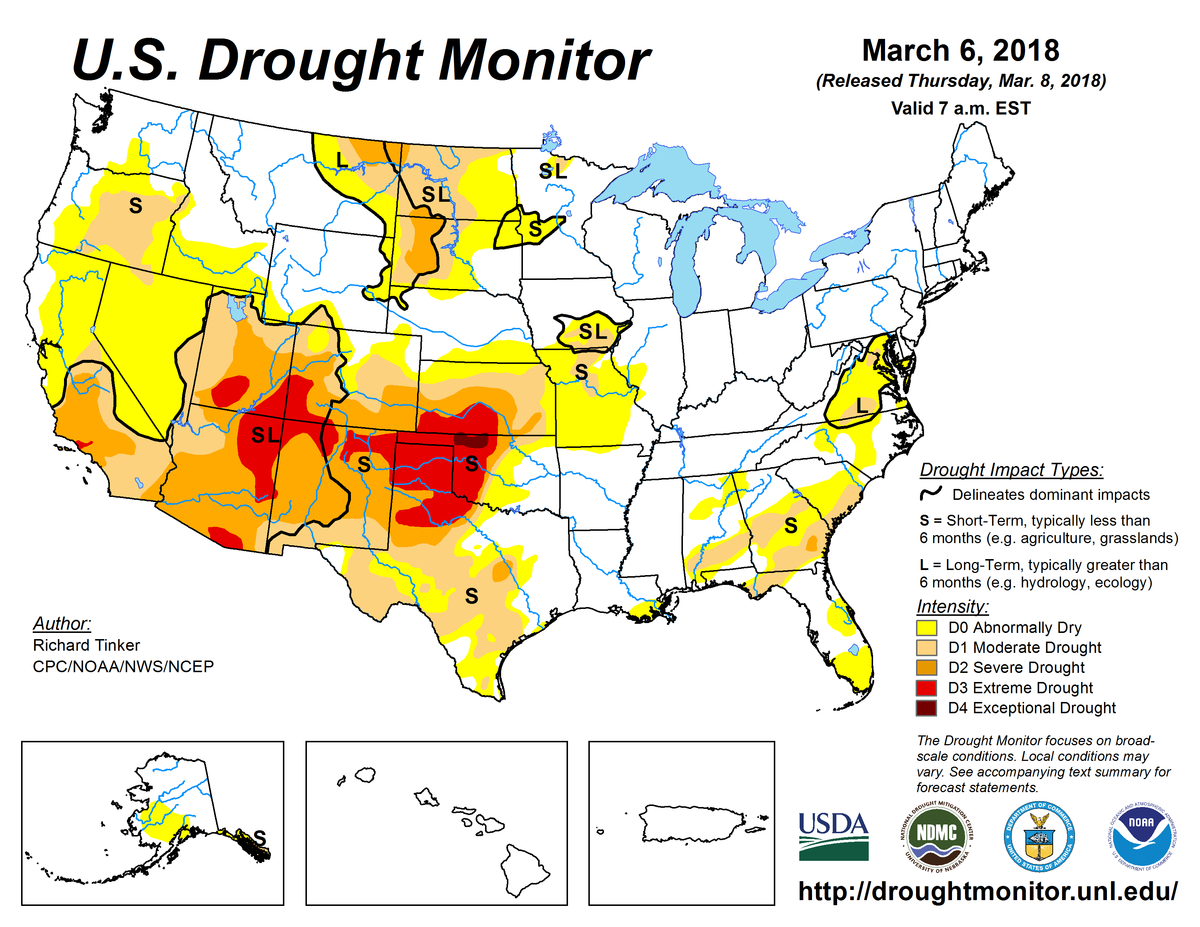
According to the March 6, 2018, U.S. Drought Monitor, moderate to exceptional drought covers 30.6% of the contiguous United States, a decrease from last week’s 31.3%. However, extreme drought increased from 3.2% last week to over 4.8%. And, exceptional drought crept back into the Nation for the first time in 20 weeks, covering 0.1% of the Lower 48.
The weather pattern during this U.S. Drought Monitor week consisted of several strong storm systems moving through a westerly flow in the upper-level circulation. The weather systems dipped into a trough over the western contiguous United States, bringing widespread cooler-than-normal temperatures to the West and above-normal precipitation from central California to the northern Rockies. The weather systems dried out as they crossed the Rockies, leaving much of the Southwest and central to southern Plains dry. Canadian fronts and the remnants of Pacific fronts and weather systems brought above-normal precipitation to the northern Plains, northeast Texas to the Tennessee Valley, and parts of the Midwest to Northeast.
The main storm track avoided much of the Southeast and parts of the Great Lakes, Mid-Atlantic, and northern New England, leaving these areas drier than normal. The westerly flow kept the really cold Canadian air out of the country, leaving much of the contiguous United States east of the Rockies warmer than normal. Drought contracted in parts of the Plains and Deep South where above-normal precipitation fell, but expanded or intensified in parts of the Southwest, central Plains, and Southeast where dry weather continued.
Abnormal dryness and drought are currently affecting nearly 116 million people across the United States—about 37.2% of the country’s population.

The full U.S. Drought Monitor weekly update is available from Drought.gov.
In addition to Drought.gov, you can find further information on the current drought as well as on this week’s Drought Monitor update at the National Drought Mitigation Center.
The most recent U.S. Drought Outlook is available from NOAA’s Climate Prediction Center and the U.S. Department of Agriculture provides information about the drought’s influence on crops and livestock.
For additional drought information, follow #DroughtMonitor on Facebook and Twitter.



